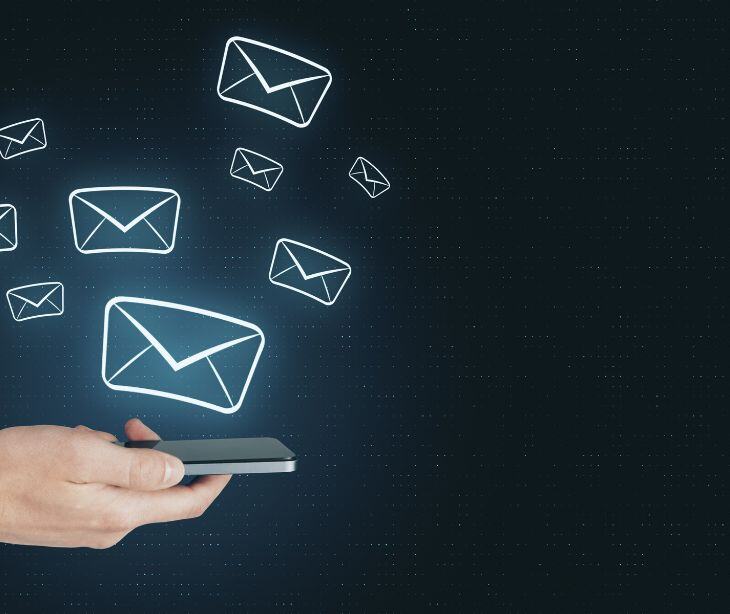2 min read
Managing HIPAA compliance in email communications with multiple recipients
Liyanda Tembani
June 26, 2024

Healthcare professionals can manage HIPAA compliance in email communications with multiple recipients by using BCC to protect recipient identities, avoiding the inclusion of protected health information (PHI) in email headers, ensuring emails containing PHI are encrypted both in transit and at rest, obtaining explicit patient consent before sending PHI, and regularly training staff on HIPAA regulations and secure email practices. These steps collectively ensure the protection of patient privacy and adherence to HIPAA standards.
Understanding HIPAA requirements
HIPAA’s Privacy Rule and Security Rule establish standards for protecting PHI in electronic communications. PHI includes any information that can be used to identify a patient, such as names, medical records, or contact details. According to the HHS, "The Privacy Rule allows covered health care providers to communicate electronically, such as through e-mail, with their patients, provided they apply reasonable safeguards when doing so.".
Challenges in email communication
Email poses several risks in healthcare settings, including unauthorized access, accidental disclosures, and failure to comply with HIPAA regulations. One of the primary reasons for email breaches is human error, with at least 85% of data breaches in organizations attributable to individual mistakes. Common mistakes include using CC instead of BCC, exposing recipient email addresses, and including PHI in email subject lines or headers.
Accidental disclosures often happen when PHI is included in the body of the email or attachments without proper security measures. Failing to comply with HIPAA regulations can result in significant financial penalties, damage to reputation, and loss of patient trust.
Read more: Why HIPAA breaches related to email are so common
Best practices for HIPAA compliant email communication
Use of blind carbon copy (BCC)
Always use BCC instead of CC to protect patient privacy when sending emails to multiple recipients. BCC hides recipient email addresses from others on the list, preventing unintended disclosure of patient information. This practice ensures that each recipient receives the email privately, without exposing others’ identities.
BCC protects the email addresses and helps maintain the confidentiality of the communication content. If an emailcontains PHI, using BCC minimizes the risk of unauthorized access by limiting exposure to unintended recipients.
Read more: What is the role of BCC in HIPAA compliant email communication?
Avoidance of PHI in email headers
Ensure email subject lines and "To" or "From" fields do not contain patient PHI. These fields should only include generic information to identify the nature of the communication without revealing sensitive details. Separating metadata from PHI-containing content minimizes the risk of accidental exposure.
Encryption requirements
Encrypt emails containing PHI both during transmission and at rest. Encryption scrambles the content of the email, making it unreadable to unauthorized users. Use HIPAA compliant email platforms or encryption tools that comply with HIPAA standards to protect patient information effectively.
Encryption methods include Transport Layer Security (TLS) for emails in transit and Advanced Encryption Standard (AES) for data at rest. These encryption standards ensure that even if an email is intercepted, the PHI remains secure and inaccessible without proper decryption keys.
Patient consent and authorization
Obtain explicit consent from patients before sending any PHI via email to multiple recipients. Document patient authorization, specifying who will receive the information and for what purpose. This step ensures compliance with HIPAA requirements for patient privacy and confidentiality.
Consent forms should detail the types of information, the recipients, and the intended use. Inform patients of the risks associated with email communication and give them the option to decline email communication in favor of other methods.
Related: How to obtain patient consent for email communication
Training and policies
Educate healthcare staff on HIPAA regulations and secure email practices regularly. Implement clear policies and procedures for handling PHI in emails, including guidelines on encryption, use of BCC, and obtaining patient consent. Training enhances staff awareness and reduces the risk of compliance breaches.
FAQs
Is it acceptable to use personal email accounts for sending PHI?
No, personal email accounts are not secure and do not comply with HIPAA standards. Always use a secure, encrypted email service.
Read more: How do I make my personal email HIPAA compliant?
Can healthcare organizations include multiple patients' information in a single email to their respective healthcare providers?
No, each email should only include the PHI of one patient to prevent accidental disclosure to unauthorized individuals.
Can automated email systems be used to send PHI to multiple recipients?
Yes, but ensure that the automated system is HIPAA compliant, uses encryption and includes safeguards to prevent unauthorized access or disclosures.
Subscribe to Paubox Weekly
Every Friday we'll bring you the most important news from Paubox. Our aim is to make you smarter, faster.



